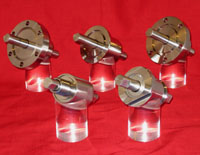
High Torque, Low Cost Feedthroughs
New SuperseaL™ ½" solid shaft rotary motion feedthroughs offer a higher 389 in-lbs. transmission torque capability and are available immediately from stock starting at $495. Learn More.
|

CLB Power Supply for Variable
Low Frequency
Comdel's proven CLB Series of Low Frequency Power Supplies provide 2500 to 12,000 Watts of power in varying output frequency with a superior design in a small, lightweight package.
Learn more.
Comdel
11 Kondelin Road
Gloucester, MA 01930
Tel: 978-282-0620 or 800-468-3144
Fax: 978-282-4980
www.comdel.com
info@comdel.com
|

From AR Coatings to Notch Filters, and from TCOs to DBRs, Evatec offers customized coating platforms and complete process solutions based on enhanced evaporation and sputter.
Phone: (603) 669-9656
www.evatecnet.com
E-Mail:infoNA@evatecnet.com
|
64 CFM List $8,250
3 to 64 CFM, 6 to 108 m3/hour. All voltages, 1 and 3 phase. Fomblim/Krytox available. 2 year parts & labor warranty, satisfaction guaranteed.Prices and Complete Specs at:
|

Fil-Tech's New 2013 Catalog
Fil-Tech's Quality Crystals®
Gold, Longer Life Gold, and Alloy 6MHz and 5MHz styles. Fil-Tech supplies rate monitors, sensorheads, feedthroughs, ebeam and ion source parts. Fil-Tech's FT704 replaces DC704. Call for catalog and Technical Bulletins.
Fil-Tech, Inc.
617-227-1133 or 800-743-1743
www.filtech.com
|
 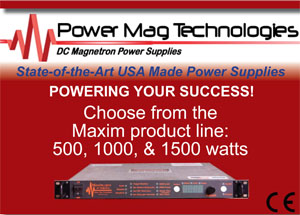
THREE STEPS TO SUCCESS
Power Mag Technologies now offers 3 different power levels of DC Magnetrons to enhance your sputtering process with the Maxim line of power supplies.
Contact: 877.513.3295
|
 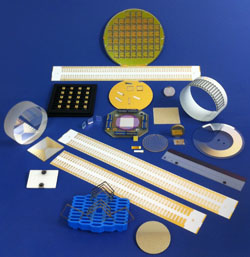
Thin-Films Research is prepared to meet your custom thin-film coating requirements. Using state-of-the-art equipment and over 40 years of experience, Thin-Films Research offers technology for the electro-optics, semiconductors, sensors & medical electronic industries. Learn More
Thin-Films Research, Inc.
270 Littleton Road
Westford, MA 01886
Phone: 978-692-9530
Fax: 978-692-9531
E-Mail: sales@thinfilmsresearch.com |


Leak-free Rotary Vane Pumps
DuoLine two-stage rotary vane pumps with contactless, magnetically coupled drives are hermetically sealed, virtually eliminating oil leaks. This makes them clean and more reliable with extended maintenance intervals. Learn More.
Pfeiffer Vacuum, Inc. Phone: 603-578-6500 Toll Free: 800-248-8254 Web site: www.pfeiffer-vacuum.com contact@pfeiffer-vacuum.com |
Semiconductor
Ultra High Vacuum Bellows
Learn how edge welded bellow are used as flexible penetrations into process chambers, holding ultra-high vacuum or moderate positive pressures while also providing motion inside the chamber.
BellowsTech, LLC
Visit Us Online
Phone: 386-615-7530
Email: bellows@bellowstech.com
|

Smart solutions for surface technology from Bürkert - perfect for optimal process yields, high quality and peace of mind.
Bürkert. We make ideas flow.
Bürkert Werke GmbH
Maik Lösel
Segment Manager Gas
Christian-Bürkert-Str. 13-17
74653 Ingelfingen, Germany
Phone: +49 35952 36 362
Email: maik.loesel@burkert.com
|


EQP Mass and Energy Analyser for Plasma Diagnostics
- Plasma ion analyser for +ve and -ve ion analysis
- Neutrals and neutral radical detection
- For correlation of plasma parameters with film quality Learn More
|

Temescal Systems & Components
Industry leaders choose Temescal for our unparalleled expertise in electron beam coating system and component solutions. Embrace the cloud.
Learn more.
http://www.temescal.net
(800) 522-1215
email: temescalinfo@ferrotec.com
|
 One-week Course One-week Course in the Practical Design and Production of Optical Thin Films June 3-7, 2013
Also
October 14-18, 2013
Charleviox, MI USA
Comprehensive and Comprehensible!
|


USB-Powered Reflectometer for Thin-Film Measurement
Quickly measure thickness and index of single- and multi-layer films using aRTie, which simultaneously measures reflectance and transmittance.
Learn more.
Filmetrics, Inc.
Phone: 858-573-9300
www.filmetrics.com
info@filmetrics.com
|


ULVAC's SPW-030 roll coating system is capable of processing 300 mm wide substrate compositions including thin-gauge metal rolls and polymeric materials for R&D and Pilot-scale production. Learn More.
ULVAC Technologies, Inc. Visit Us Online Tel: 1-978-686-7550
E-mail: sales@us.ulvac.com
|

Ferrofluidic Seals
Ferrotec's Ferrofluidic® vacuum feedthroughs set the standard for precision sealing in rotary motion applications. Available in standard sizes or customized for your requirements. Learn more.
http://seals.ferrotec.com
(800) 258-1788
email: info@ferrotec.com
|
 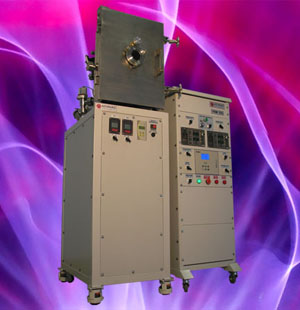
Versatile and Reliable Vacuum Deposition Systems (e-beam and thermal evaporation, ion beam and magnetron sputtetring) for Universities and industry, components for PVD and sputtering systems. ROBVAC Fryazino, Moscow Region, Russia Tel: +7 495 966 2814 www.robvac.com |


Automatic Valve Controller The INTELLITROL series of automatic valve controllers provide total control of vacuum operations. It offers fully automatic, protected manual mode and service mode for complete manual operation. Learn More.
YTI Vacuum Coating
Equipment and Service
Phone: 860.429.1908
Intellitrol@ytionline.com
www.ytionline.com
|

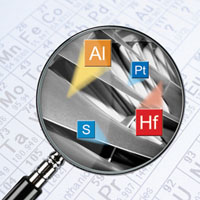
Take Control of Contaminants
Analytical Services Worldwide
Composition | Trace Elements
Thermal Properties
Full Range of Analytical Services
Innovative Analytical Solutions
Phone: 315-431-9900
svc@eaglabs.com
www.eaglabs.com
|

INFICON thin film deposition controllers, monitors and accessories, including customizable sensors and feedthroughs, offer features, function and value targeted to your application. View our catalog and contact us today! |
|
Now Open!
SVC Digital Library

On-Line Access to the
SVC Annual Technical Conference Proceedings
SEARCH with intuitive features TAG favorite titles
SHARE abstracts via e-mail
DOWNLOAD manuscripts
FREE for members
The database currently contains all manuscripts since 2007. Previous years will continuously be incorporated.
|
|
|
|
Sprinkled Silver Nanocubes Enhance Light Absorption
| From Photonics Spectra, Tech Pulse, March 2013:
"Just as salt sprinkled over a piece of meat enhances its flavor, tiny silver cubes sprinkled at random on a polymer-coated gold surface enhance the material's ability to "perfectly" absorb light of a given wavelength. 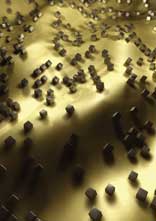
A simple chemical synthesis method from Duke University uses a dusting of silver nanocubes to modify the absorptive properties of a metallic surface, yielding a simple and tunable way to create large-area "perfect" absorbers. When separated from the underlying metal by a very thin insulating layer, the cubes act as tiny antennas that cancel out the reflectance of the metal surface. The cost-effective absorbers show potential for applications ranging from energy-harvesting devices to sensors."
The research is published in Nature (doi: 10.1038/nature11615).
|
|
Magnolia Solar, in Collaboration with the SUNY NanoCollege and U.S. Photovoltaic Manufacturing Consortium, Demonstrates High-Performance Flexible CIGS Solar Cell
|
From Magnolia Solar Corporation, March 2, 2013: ""Magnolia Solar Corporation announced that its wholly owned subsidiary, Magnolia Solar, Inc., has demonstrated a flexible CIGS solar cell with an efficiency of 13 percent, rivaling the average efficiency of current PV technologies and proving that flexible thin film solar cells are potentially a viable solution for various energy needs. The flexible CIGS solar cell, made using thin, flexible stainless steel and titanium substrates, was developed and produced by the U.S. Photovoltaic Manufacturing Consortium (PVMC) on behalf of Magnolia Solar at the College of Nanoscale Science and Engineering's (CNSE) Solar Energy Development Center (SEDC)" at State University of NY (SUNY)."
Source: Read the full article...
|
|
U.S. Department of Energy Honors PPG Scientists for Advances in OLED Lighting
|
From PPG Industries, March 20, 2013: ""PPG Industries has been recognized by the U.S. Department of Energy for "significant achievements" in advancing OLED lighting technology during the 2013 Solid-State Lighting (SSL) R&D Workshop in Long Beach, Calif. PPG was the only company honored in the OLED lighting area at the three-day workshop, which brought together nearly 300 researchers, manufacturers and industry insiders who are promoting and monitoring the latest developments in SSL technology.
PPG's advances are the result of a two-year project initiated with the DOE in 2010 to promote the commercialization and mass production of OLED lighting. The PPG team has demonstrated a float glass-based integrated substrate with scalable light-extraction technologies and transparent conductive films for OLED lighting applications. The results indicate significant cost and performance advantages over conventional ITO-coated display-grade glass substrates. PPG's light-extraction technologies are compatible with the conventional float glass manufacturing process and result in significant enhancement of device efficiencies."
Source: Read the full article...
|
|
American Graphite Technologies Announces Successful Test Productions of Graphene Paper
| | From Solid State Technology, March 18, 2013: ""American Graphite Technologies Inc. announced the successful production of test samples of a graphene paper product by its development and manufacturing partner, CTI Nanotechnologies LLC. CTI Nanotechnologies reported it had successfully developed test samples and reproducible test results of a highly flexible membrane of nano-particles from 50-150um thick that is highly conductive. The next phase of development is to work to continue improvements to the size, conductivity and scalability resulting in a low cost continuous "roll to roll" production operation at industrial specifications. Graphene Paper has the potential to revolutionize the automotive, aviation, electrical and optical industries. Currently Graphene Paper is available only in limited sizes, is relatively expensive and is very time consuming to make."
|
|
NRL Researchers Develop New Monolayer Materials for Chemical Vapor Sensors
|
From U.S. Naval Reserch Laboratory (NRL), March 29, 2013: "Scientists at the Naval Research Laboratory have developed a vapor sensor based on new monolayer materials that show great potential for future nanoscale electronic devices. NRL scientists have fabricated this sensor using a single monolayer of molybdenum disulfide (MoS2) on a silicon dioxide wafer. They show that it functions effectively as a chemical vapor sensor, exhibiting highly selective reactivity to a range of analytes, and providing sensitive transduction of transient surface physisorption events to the conductance of the monolayer channel. The high surface-to-volume ratio of such new two-dimensional materials is a significant asset for vapor sensor applications-these materials must 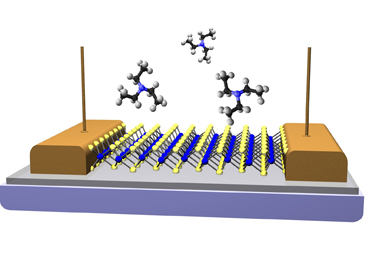 exhibit a rapid and selective response to a range of analytes (determined by the character of surface atomic sites), sensitive transduction of the perturbation to the electrical resistance of the channel, and rapid recovery upon removal of the vapor." exhibit a rapid and selective response to a range of analytes (determined by the character of surface atomic sites), sensitive transduction of the perturbation to the electrical resistance of the channel, and rapid recovery upon removal of the vapor."
|
|
Flexible Barrier Films for Electronics See 39.8% CAGR Over Next Decade
|
From Printed Electronics World, April 3, 2013: "IDTechEx Research, in its latest report on the topic of flexible encapsulation "Barrier Films for Flexible Electronics 2013-2023: Needs, Players, Opportunities" is forecasting the market for flexible barrier films to conservatively grow to just over $34 Million by 2016. Up until that point, over 95% of the market is accounted for from a slowly growing market for flexible photovoltaics based on CIGS and a-Si platforms.  The really significant growth though, is expected to kick in once flexible display technologies move out of the prototyping stage and start becoming commercial products, changing the way consumers interact with their portable electronic devices. By 2023, the market for flexible barriers will already be over $240 Million, with display technologies accounting for over a third of that value." The really significant growth though, is expected to kick in once flexible display technologies move out of the prototyping stage and start becoming commercial products, changing the way consumers interact with their portable electronic devices. By 2023, the market for flexible barriers will already be over $240 Million, with display technologies accounting for over a third of that value."
Source: Read the full article...
|
|
Make Way for Flexible Silicon Chips
|
From IEEE Spectrum Magazine, March 2013, by Joachim N. Burghartz, University of Stuttgart, Germany: " Seamless integration of computing into everyday objects isn't quite here yet, in large part because we still don't have cheap, thin, flexible electronics. The Institut für Mikroelektronik Stuttgart, in Germany, is developing a technique, under the trade name Chipfilm. It entails growing crystalline silicon, layer by layer, on a foundation laced with sealed cavities. For this scheme, they attach the crystalline silicon layer to an array of small anchors, ensuring that the foundation will be strong enough to support the chip throughout the processing but weak enough to let us snap the finished chip off the top of the wafer. Then we can reuse the bulk of the silicon as a substrate."
Source: Read the full article...
|
ARPA-E Summit Highlights Early Successes in Energy Innovation
| | From Chemical and Engineering News, March 18, 2013, by Melody Bomgardner: "The impending budget cuts known as sequestration cast a shadow over Washington, D.C., in late February as the Department of Energy kicked off its Energy Innovation Summit, a gathering of researchers, government officials, and businesspeople affiliated with the Advanced Research Projects Agency-Energy, or ARPA-E. But the tone of the conference was comparatively sunny.
The ARPA-E program, now in its fourth year, provides financing to help researchers demonstrate "transformative" technologies for the production and storage of energy. So far, 17 projects have attracted more than $450 million in private-sector funding after receiving initial ARPA-E grants worth about $70 million. In its history, ARPA-E has awarded grants to 285 projects, 100 of which were funded in the past six months. Only a dozen projects have had their funding terminated.
- Energy storage technologies were well represented at the summit's technology showcase. They included materials and systems for batteries as well as methods for storing energy as heat.
- Not all of the technologies on display were related to renewable energy. Ceramatec, a materials firm, is developing a modular, one-step gas-to-benzene converter.
|
|
How Organic Magnets Grow in a Thin Film
| |
From University of Tübingen (Germany), March 22, 2013: "Development of organic single molecule magnets opens a great many of applications for magnetic materials and new memory technologies. Organic magnets are lighter, more flexible and less energy intensive in production than conventional magnets. Scientists at the Institute of Physical and Theoretical Chemistry of the University of Tübingen have established together with colleagues of the University of Florence a first step on the road to new applications for organic magnets: Their controlled deposition in a thin film.
Scientists concentrated on the production of a very thin film of molecular magnets in the dimension of nanometers - only millionths of millimeters. The scientists let grow the molecule NitPyn, a derivative of the nitronyl-nitroxide radical that had already proved to be a stable organic magnet, in an ordered structure on a single gold crystal. The paramagnetic character of NitPyn proved to be stable even during evaporation and deposition processes."
|
|
Record Breaking Resolution in Magnetic Nanodevices
|
From U.S. NIST, March 28, 2013:
" A team of researchers from the Royal Institute of Technology, Stockholm, the University of Maryland, and the NIST Center for Nanoscale Science and Technology have measured large variations in the magnetic properties along the edge of a thin film 500 nm-diameter disk. This work represents a significant development in the measurement of magnetic thin film edge properties, which are especially important for nanodevices, such as magnetic memory cells, where the edge to area ratio is large. The researchers' technique, called ferromagnetic resonance force microscopy, detects magnetic resonance in a sample through changes in the magnetic force between the sample and a magnetic cantilever tip."
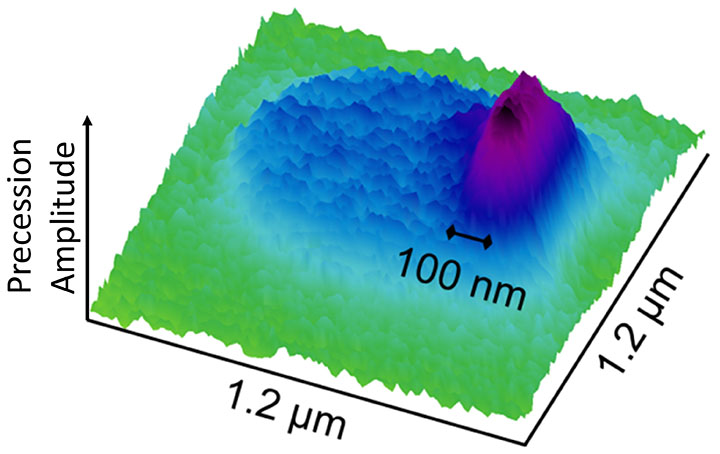
Source: Read the full article...
|
Plastic Logic Wins Award for Innovative Color Flexible Displays
| From Plastic Logic, March 15, 2013: "Plastic Logic has been awarded the Elektronik Optoelectronic Product of the Year 2013 Award for its full color flexible plastic displays.
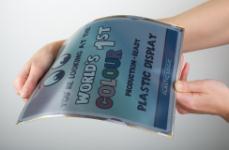 The low-power unbreakable, color and monochrome flexible plastic displays are thinner, lighter and much more robust than standard glass-based electrophoretic displays. The company has developed and qualified its process for the manufacture of these display, which can be read in all lighting conditions, including broad daylight and can be viewed from any angle. The low-power unbreakable, color and monochrome flexible plastic displays are thinner, lighter and much more robust than standard glass-based electrophoretic displays. The company has developed and qualified its process for the manufacture of these display, which can be read in all lighting conditions, including broad daylight and can be viewed from any angle.
Plastic Logic's displays are fully commercially available for integration in today's next-generation applications and products. Full color electrophoretic plastic displays represent a significant milestone, achieved by a radical new color filter alignment process, which minimizes distortion and enables perfect alignment of the flexible layers. The resulting display exceeds the color performance of standard EPD-based glass displays, due to the reduced absorption and reflections seen with the plastic color filter.
The Elektronik Product of the Year Awards for the most innovative and future-oriented productsare chosen by the readers of the Elektronik magazine."
Source: Read the full article...
|
|
New Imaging Device that is Flexible, Flat, and Transparent
| From The Optical Society (OSA), February 20, 2013:
" A research team at Johannes Kepler University Linz in Austria has developed an entirely new way of capturing images based on a flat, flexible, transparent, and potentially disposable polymer sheet. The new imager, which resembles a flexible plastic film, uses fluorescent particles to capture incoming light and channel a portion of it to an array of sensors framing the sheet. With no electronics or internal components, the imager's elegant design makes it ideal for a new breed of imaging technologies, including user interface devices that can respond not to a touch, but merely to a simple gesture. 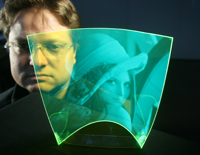 The sensor is based on a polymer film known as a luminescent concentrator, which is suffused with tiny fluorescent particles that absorb a very specific wavelength and then reemit it at a longer wavelength. Some of the reemitted fluorescent light is scattered out of the imager, but a portion of it travels throughout the interior of the film to the outer edges, where arrays of optical sensors (similar to 1-D pinhole cameras) capture the light. A computer then combines the signals to create a gray-scale image." The sensor is based on a polymer film known as a luminescent concentrator, which is suffused with tiny fluorescent particles that absorb a very specific wavelength and then reemit it at a longer wavelength. Some of the reemitted fluorescent light is scattered out of the imager, but a portion of it travels throughout the interior of the film to the outer edges, where arrays of optical sensors (similar to 1-D pinhole cameras) capture the light. A computer then combines the signals to create a gray-scale image."
Paper published in the Optical Society's (OSA) open-access journal Optics Express.
Source: Read the full article...
|
|
Enabling "Bulk" Silicon to Emit Visible Light for the First Time
|
From University of Pennsylvania, March 26, 2013: " Electronic computing speeds are brushing up against limits imposed by the laws of physics. Photonic computing, where photons replace comparatively slow electrons in representing information, could surpass those limitations, but the components of such computers require semiconductors that can emit light. Now, research from the University of Pennsylvania has enabled "bulk" silicon to emit broad-spectrum, visible light for the first time, opening the possibility of using the element in devices that have both electronic and photonic components.  The research was supported by the U.S. Army Research Office and the National Institutes of Health. Their work was published in Nature Photonics." The research was supported by the U.S. Army Research Office and the National Institutes of Health. Their work was published in Nature Photonics."
Source: Read the full article...
|
|
Using Nanomaterials at Work - a New Guidance from UK's Health and Safety Executives
| |
From Nanowerk, March 28, 2013: "The UK's Health and Safety Executive (HSE) has released a new guidance ("Using nanomaterials at work") that describes how to control occupational exposure to manufactured nanomaterials in the workplace. It will help you understand what you need to do to comply with the Control of Substances Hazardous to Health Regulations 2002 (COSHH) (as amended) when you work with these substances. This guidance is specifically about the manufacture and manipulation of all manufactured nanomaterials, carbon nanotubes (CNTs) and other bio-persistent high aspect ratio nanomaterials (HARNs). It has been prepared in response to emerging evidence about the toxicity of these materials."
Source: Read the full article...
|
|
Vanadium Oxide/Graphene Material Works Well for Lithium-Ion Storage
|
From Rice University, March 25, 2013, by Mike Williams: "Hybrid ribbons of vanadium oxide (VO2) and graphene may accelerate the development of high-power lithium-ion batteries suitable for electric cars and other demanding applications. The Rice University materials scientist determined that the well-studied material is a superior cathode for batteries that could supply both high energy density and significant power density. The ribbons created at Rice are thousands of times thinner than a sheet of paper, yet have potential that far outweighs current materials for their ability to charge and discharge very quickly. Cathodes built into half-cells for testing at Rice fully charged and discharged in 20 seconds and retained more than 90 percent of their initial capacity after more than 1,000 cycles."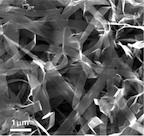
The research appears online in the American Chemical Society journal Nano Letters
Source: Read the full article...
|
|
Do You Have an Interesting Article to Share?
|
Interested in sharing the latest news in vacuum coating technology? Forward us a link to an article you want to share with the rest of the SVC readership to publications@svc.org. Purchase advertising space in this newsletter by contacting SVC at 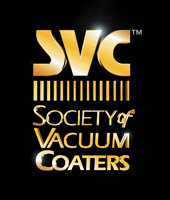 svcinfo@svc.org. svcinfo@svc.org.
Society of Vacuum Coaters
71 Pinon Hill Place NE
Albuquerque, New Mexico 87122
505-856-7188
|
|
|
|
|